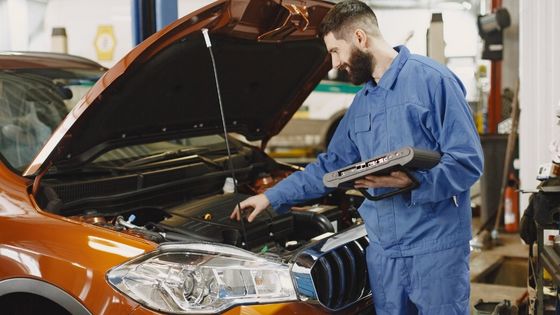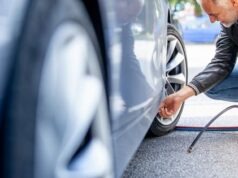Taking on a DIY project or repair job is a rewarding experience. It gives you a sense of pride and fulfillment. When you are a car enthusiast, it’s natural to feel the need to do vehicle body work, maintenance, and repairs yourself. Aside from driving, tinkering with cars is also fun, right?


Basic or routine maintenance and repairs can be done at home even with a modest tool set. Still, there are jobs that should be left to professionals with fully equipped facilities. Let’s give you a rundown of the car repair jobs you should not attempt to do yourself (unless, of course, you are a mechanic or engineer).
1. Repairing or Deep-Cleaning the AC
Odor coming out of the AC vents can be solved with car AC cleaner sprays, which you can easily buy from auto supply shops. If the odor persists, please don’t remove the dashboard to clean the AC system. There are so many components that you risk breaking when you do this. For proper AC cleaning or repair, bring your vehicle to a professional car AC repair shop.
Some chemicals used in air conditioning systems are harmful when you get directly exposed to them (through inhalation or skin contact). This is another reason not to risk doing AC repair or cleaning jobs yourself.
2. Fixing the Electrical System
A car’s electrical system is a complex network of wires, connectors, and sensors. Tracing issues on your own can be difficult unless you are trained for the job.
3. Repairing or Reprogramming the ECU
Your car’s ECU (electronic control unit) is essentially a computer, like your laptop or tablet. As the ECU is a highly advanced piece of technology, reprogramming it isn’t as easy as you think. Repairing or reprogramming it is a job that is best entrusted to a professional.
4. Repairing the Engine
The engine is a complex machine; it has so many moving parts. On top of that, most modern engines are intertwined with computer systems, so you’ll not be simply dealing with mechanical components.
5. Changing the Struts
As the car needs to be jacked up and you (or part of your body) need to be under the car to do this job, it’s really not for everyone. Moreover, if are unsure how to remove the strut assembly correctly, the spring might decompress abruptly and shoot the assembly apart — this can seriously injure you.
6. Replacing the Windshield (or Fixing Cracks on It)
Unless you have the right contraptions, changing the windshield is typically a two-man job. If you do it alone, you might install the windshield incorrectly, which can make it more vulnerable in case of a crash.
There are DIY windshield repair kits available to fix chips and cracks, but they may not fully repair the windshield. Also, if you apply the wrong resin to your windshield, the crack might expand even further.
7. Installing a New Fuel Pump
Fuel pumps can last up to 100,000 to 200,000 miles, but before then, watch out for these signs that may tell the need for fuel pump replacement.
- The engine won’t start.
- Fuel efficiency is reduced.
- Your engine stutters or sputters as you drive.
- There are sudden speed surges.
- High-pitched whining or squealing from the engine is present.
When the time comes to replace the fuel pump, better let the professionals do it. In most cases, the fuel tank needs to be lowered in order to access the fuel pump, so working alone isn’t really advisable. Prolonged inhalation of gasoline fumes is also not healthy.
8. Fixing the Ignition System
The car’s ignition system is linked to the electrical system, so the risk of electrical shock is there when you attempt to fix it. Ignition systems in most modern cars are also connected to the ECU, which adds to the complexity of diagnosis and repair.
9. Installing a Head Unit, Radio, or Video Player
Car radios/stereos are no longer the pop-in modules they used to be. Installing modern DVD players and radios requires electrical wiring, so unless you are a pro electrician, it’s better to have a certified technician or specialist do the installation.
10. Body and Paint Work
Hairline scratches on the finish can be sorted out by scratch removal products, which you can apply on your own. For paint chips, heavy rust, and collision damage, bring your car to a proper body and paint repair shop. Vehicle body work and painting are two of the most challenging car repair jobs. Not only do they require an artistic touch but also take years of practice to execute effectively. If you’re inexperienced, you might end up consuming more time and spending more money than if you had a pro shop do the work for you.









